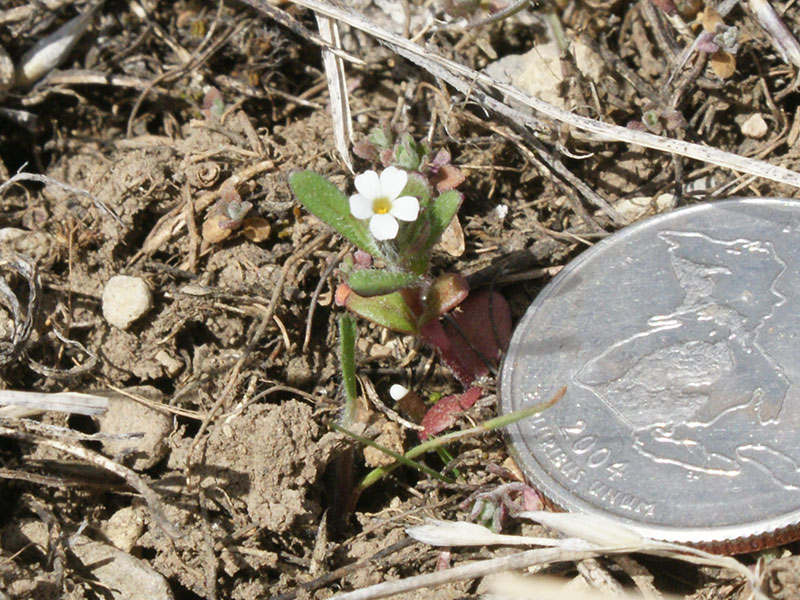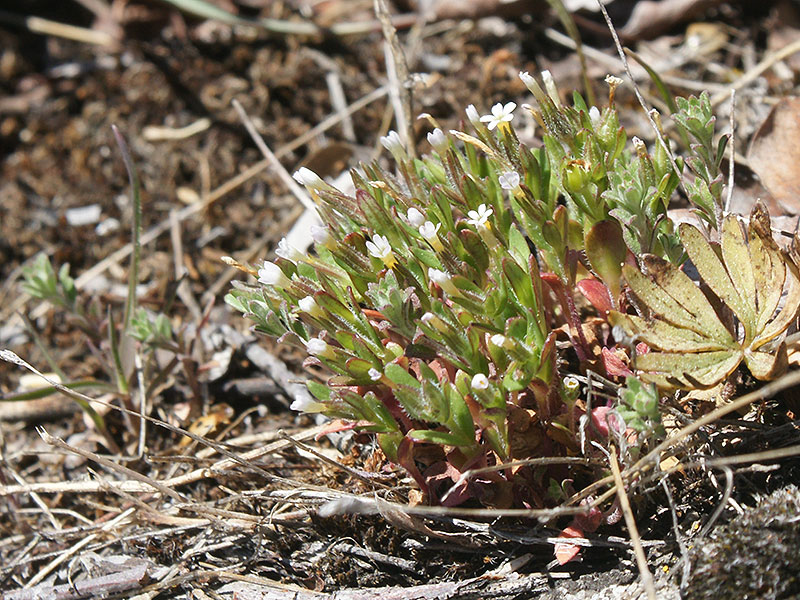Microsteris gracilis / slender phlox
- everything about it is teeny
- white or pink, 5-petal flowers ca. 2 mm diameter
- exposed, in early spring (ephemeral)
Also known as: microsteris, beggar’s gilia, annual phlox
Synonyms: Phlox gracilis, Gilia gracilis
Slender phlox is the only species in its genus and the subject of some controversy – perhaps more than you would think its size warrants. Some think it should actually be in the genus Phlox.
Overall, the plant will supposedly get up to a foot tall and is notably variable in its appearance. The ones I have found in the Valley count only as teeny by all standards. If you look in the Gallery, the comparison to a quarter tells you that.
What you first notice when you find this plant, indeed the only way you will find it, is the flower. Like the larger Phlox spp., the inflorescence is at the top of a stem, and can have one or more very small flowers. The flowers have a tubular corolla with 5 petals or lobes. Each petal has a small notch in it. Although the petals are said to be most commonly pink, the ones I have seen so far in the Valley are white. The throat of the tube is yellow. It is hard to tell from a photo just how big a flower is, but in this case it isn’t more than a couple millimeters across.
The leaves of slender phlox are lance shaped, no more than about an inch long and arranged oppositely except at the very top of the very short plant. The leaves are commonly glandular and hair-covered, and are sessile.
Unlike the other phloxes, slender phlox is an annual. It can grow in either dry or moist soil; seen here, it was in a rocky, sagebrush community. Like other small and teeny plants, it is most commonly found in early spring, often just after snowmelt, before its neighbors deprive it of light, nutrients and water.
| Color | |
|---|---|
| Family | |
| Blossom size | |
| Inflorescence size | |
| Inflorescence type | |
| When? | |
| Where? |



